
漢德百科全書 | 汉德百科全书

广州十三行(英语:Thirteen Factories或Thirteen Hongs of Canton),又称广东十三行、十三洋行,是指清朝沿用明朝[1]之习惯称呼广州对外贸易特区内的十三家牙行商人。后来,这地区称为“十三行街”,“洋货行”、“洋行”成为外贸商行的通称。十三行街现为十三行路,原十三行地区位于今十三行路以南及广州文化公园一带。
康熙二十三年(1684年),康熙批准外商在粤海关(广州)、闽海关(福州厦门)、浙海关(宁波)、江海关(松江)四个口岸经商,当时,国内外运到广东海口的商货很多,行商却很少。1686年洋商获准在广州市珠江口的一个街区居住和经商。
乾隆二十二年(1757年),清廷下令封锁全国对外口岸,仅保留广州珠江粤海关一带作为对外通商港口(锁国),及不得在中国其他地方经商。广州的洋行集中在离珠江约三百尺的十三行区。在广州立洋行的包括花旗国(美国)、红毛国(英国)、双鹰国(奥地利帝国)、单鹰国(普鲁士)、黄旗国(丹麦)、法兰西、瑞典、葡萄牙等国商人[2]。十三洋行区除洋商、十三行外,还有官办的商行。
| 商名 | 行名 | |
|---|---|---|
| Howqua 浩官 | Ewo 怡和 | |
| Mowqua 茂官 | Kwonglei 广利 | |
| Puankhequa 潘启官 | Tungfoo 同孚 | |
| Goqua 鳌官 | Tunghing 东兴 | |
| Kingqua 经官 | Tienpow 天宝 | |
| Sunshing 孙青 | Hingtae 兴泰 | |
| Mingqua 明官 | Chungwo 中和 | |
| Saoqua 秀官 | Shuntai 顺泰 | |
| Pwanhoyqua 潘海官 | Yanwo 仁和 | |
| Samqua 爽官 | Tungshun 同顺 | |
| Kwanshing 昆官 | Futai 孚泰 | |
| Lamqua 林官 | Tungchang 东昌 | |
| Takqua 达官 | Anchang 安昌 |


滚轮式加法器又称帕斯卡计算器,是1642年由布莱兹·帕斯卡发明的一种机械计算器[2]。当时布莱兹·帕斯卡在鲁昂担任税务监督员,由于税务工作需要进行繁琐的算术计算,这一因素促使他开发出滚轮式加法器[3]。他设计的机器可以直接对两个数字进行加减运算,并能通过重复加减运算以达到乘除运算的目的。
此后布莱兹·帕斯卡又建造了50台原型机,1645年,他将滚轮式加法器公之于众,并将其献给了皮埃尔·塞吉埃[4]。在接下来的十年里,帕斯卡又制造了大约20台滚轮式加法器,其中很多都是在他最初的设计基础上改进的。1649年,法国国王路易十四授予帕斯卡尔一项皇室特权(类似于专利),使他拥有在法国设计和制造计算器的独家权利。现存的滚轮式加法器共有9台,大部分都在欧洲博物馆展出。
帕斯卡计算器有十进制和非十进制两种,两种今天都可以在博物馆看到。 它们是为科学家、会计师、和测量师使用而设计的。 最简单的帕斯卡计算器有五个表盘; 后来的变体最多有十个表盘。
当代法国货币体系使用里弗尔(livres)、索尔(sols)和丹尼尔(deniers),一里弗为 20 索尔,一索尔为 12 丹尼尔。 长度以 toises、pieds、pouces 和 lignes 为单位测量,6 pieds到toise,12 pouces到pied ,和12 lignes到1 pouces。 因此,帕斯卡计算器需要以 6、10、12 和 20 为基数的轮子。非小数轮子总是位于小数部分之前。
Die Pascaline ist eine mechanische Rechenmaschine, die 1642 von Blaise Pascal erfunden wurde. Sie galt lange Zeit als erste mechanische Rechenmaschine überhaupt, bis im 20. Jahrhundert Unterlagen gefunden wurden, welche die Konstruktion einer Rechenmaschine durch Wilhelm Schickard in den 1620er Jahren nachwiesen.[1]
Zuerst nannte man Pascals Erfindung im Französischen machine d’arithmétique, dann roue pascaline („pascalsches Rad“) und schließlich pascaline.
Pascal begann mit der Arbeit an seiner Rechenmaschine, als er 19 Jahre alt war, und konstruierte sie als Arbeitserleichterung für seinen Vater, der Steuerbeamter war. Sie wurde u. a. aus Messing, Elfenbein und Holz gefertigt. Im Laufe seines Lebens verfeinerte Pascal den Mechanismus immer wieder und fertigte so ca. 50 Versionen der Pascaline an.
Die Pascaline hatte Metallwählscheiben, an denen die gewünschten Nummern eingestellt werden konnten. Die Ergebnisse erschienen in Kästchen über den Wählscheiben. Der Prototyp hatte nur einige wenige Wählscheiben, spätere Versionen hatten eine größere Anzahl und konnten mit Zahlen bis zu 9.999.999 rechnen. Direkte Subtraktion war mit der Pascaline nicht möglich; es musste die Komplementärmethode verwendet werden (siehe auch Zweierkomplement für das Analogon im Binärsystem).
Eine Pascaline aus der Zeit um 1650 steht im Mathematisch-Physikalischen Salon der Staatlichen Kunstsammlungen im Dresdner Zwinger.[2] Ein weiteres Exemplar befindet sich als Leihgabe von IBM im Arithmeum in Bonn.

Der Wohlstand der Nationen (vollständiger englischer Titel: An Inquiry into the Nature and Causes of the Wealth of Nations) ist das am 9. März 1776 erschienene Werk des schottischen Ökonomen Adam Smith. Es entstand als Kontrapunkt zum bis dahin wirtschaftspolitisch vorherrschenden Merkantilismus, wie er von den damaligen europäischen Großmächten praktiziert wurde. Smiths Werk gilt als das grundlegende Werk der Wirtschaftswissenschaft, die sich erst in der Folgezeit als eigenständige Wissenschaftsdisziplin etablierte, und markiert sowohl den Beginn der klassischen Nationalökonomie als auch parallel des Wirtschaftsliberalismus.
《国富论》(英语:The Wealth of Nations)全名为《国民财富的性质和原因的研究》(英语:An Inquiry into the Nature and Causes of the Wealth of Nations),是苏格兰经济学家暨哲学家亚当·史密斯的一本经济学专著,其首份中文译本是来自翻译家严复的《原富》。

 History
History
 M 1500 - 2000 AD
M 1500 - 2000 AD

 History
History

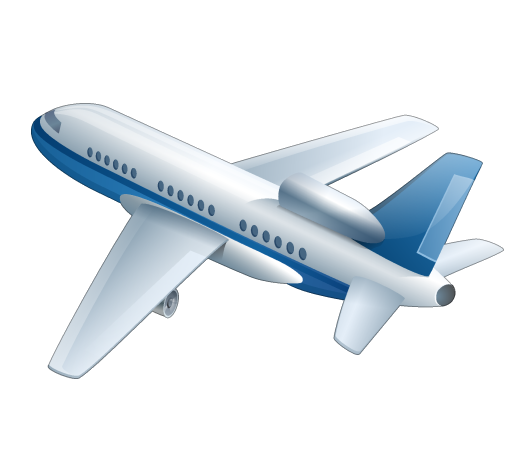
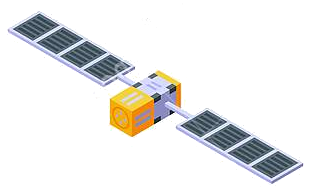
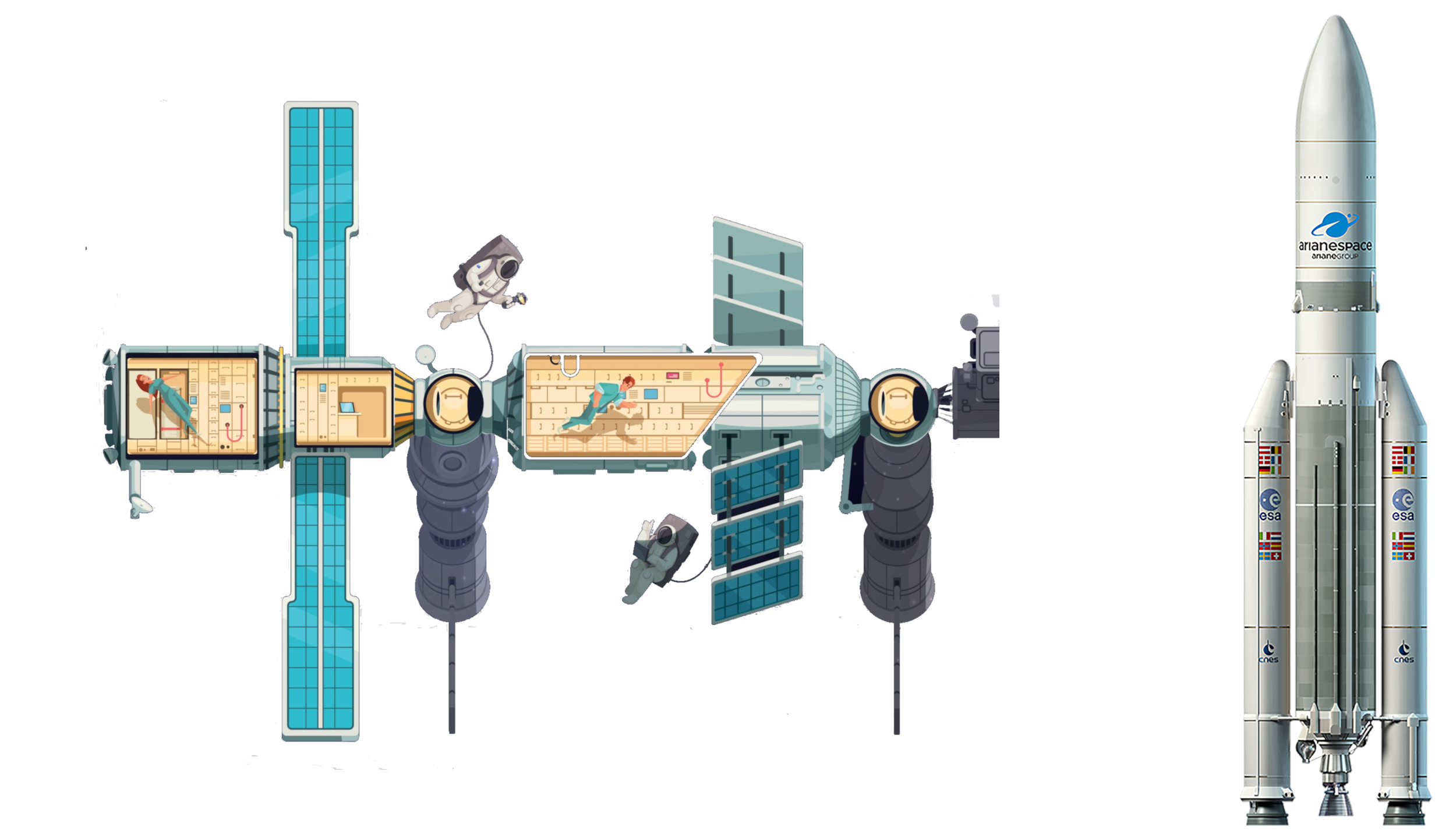 Aerospace
Aerospace
 *NASA
*NASA



 Aerospace
Aerospace
 *JAXA
*JAXA



 Aerospace
Aerospace
 *Roskosmos
*Roskosmos



 Aerospace
Aerospace
 *ESA
*ESA



 Aerospace
Aerospace
 *DLR
*DLR



 Aerospace
Aerospace
 *CNES
*CNES



 Aerospace
Aerospace
 *ASI
*ASI



 Aerospace
Aerospace
 *AEB
*AEB
 United States
United States

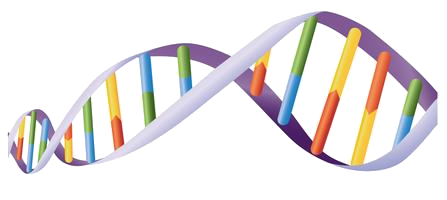 Science and technology
Science and technology
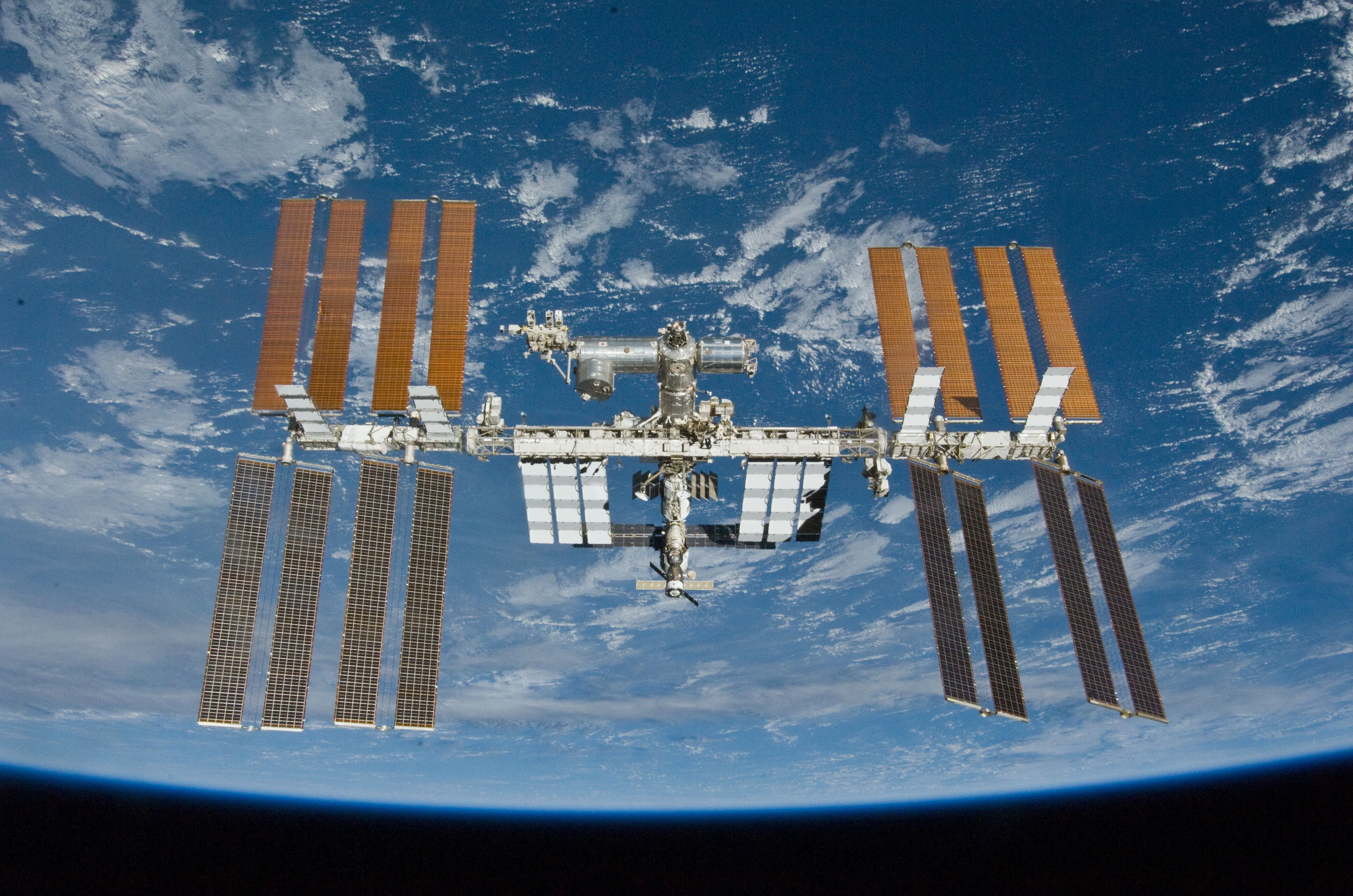

Die Internationale Raumstation (ISS) ist nach NASA-Angaben das grösste und komplexeste internationale wissenschaftliche Projekt in der Geschichte. Heute sind 16 Nationen an der ISS beteiligt: USA, Kanada, Japan, Russland, Brasilien und 11 Länder der Europäischen Weltraumbehörde (ESA), darunter auch die Schweiz, Österreich und Deutschland.
In der Dämmerung kann die Raumstation häufig von jedermann als auffälliger ruhig laufender heller Stern gesehen werden, wie sie im Laufe von einigen Minuten über den Himmel zieht und langsam seine Helligkeit verändert.
Geschichte und Aufbau
Die Planungsanfänge gehen auf das Jahr 1979 zurück. Im Januar 1984 wurde das Projekt von Präsident Reagan offiziell eingeführt und mit einem Aufruf an die – wie es damals noch hiess – „freie Welt“ sich am Raumstation-Projekt zu beteiligen, verbunden. Im Frühjahr 1985 folgten Japan, Kanada und die ESA (Europa) mit einem bilateralen Abkommen diesem Aufruf. Im September 1988 wurde festgelegt, welche Beiträge diese Partner zu der Raumstation (die von Reagan „Freedom“ getauft wurde) beitragen würden: Kanada einen Manipulatorarm (eine Art Roboterarm), Europa und Japan würden je ein Weltraumlabor beitragen. Dieses Abkommen blieb bis heute im Wesentlichen bestehen.(Quelle:http://news.astronomie.info/sky200310/thema.html)
Die Internationale Raumstation (englisch International Space Station, kurz ISS, russisch Междунаро́дная косми́ческая ста́нция, МКС) ist eine bemannte Raumstation, die in internationaler Kooperation betrieben und ausgebaut wird.
Erste Pläne für eine große internationale Raumstation gab es in den 1980er Jahren unter den Namen Freedom oder Alpha. Seit 1998 befindet sich die ISS im Bau. Zurzeit ist sie das größte künstliche Objekt im Erdorbit. Sie kreist in rund 400 km[1] Höhe mit einer Bahnneigung von 51,6° in östlicher Richtung binnen etwa 92 Minuten einmal um die Erde und hat eine räumliche Ausdehnung von etwa 110 m × 100 m × 30 m erreicht. Seit dem 2. November 2000 ist die ISS dauerhaft von Astronauten bewohnt.[4]
国际空间站(法语:Station spatiale internationale,缩写为SSI;英语:International Space Station,缩写为ISS;俄语:Междунаро́дная косми́ческая ста́нция,缩写为МКС)是一个在近地轨道上运行的科研设施,是人类历史上第九个载人的空间站。空间站的主要功能是作为在微重力环境下的研究实验室,研究领域包括生物学、物理学、天文学、地理学、气象学等,目前由六个国家或地区合作运转,包括美国国家航空航天局、俄罗斯联邦航天局、日本宇宙航空研究开发机构、加拿大太空局、巴西航天局和欧洲空间局(成员国英国[4]、爱尔兰、葡萄牙、奥地利和芬兰没有参加国际空间站计划,希腊和卢森堡则是在计划开始之后加入欧洲空间局的。[5])。中华人民共和国曾表达参与国际空间站建设的意向,但因诸多原因最终被排斥在外[6][7]。迄今为止,已有来自多国的宇航员登上国际空间站执行任务,但均为美国或俄罗斯主导的太空计划,其中还包括七名太空游客。
从1998年11月15日国际空间站第一个部分曙光号功能货舱发射升空。到2010年6月,空间站已经在轨道上环绕地球运转了66000圈[8]。国际空间站原计划在2020年后结束使命,后来改为2024年。[9]。负责国际空间站与地面之间运输的航天器有联盟号、进步号、自动运载飞船、H-II运输载具、龙飞船、发现号航天飞机、奋进号航天飞机等。国际空间站最多可承载六名乘员(长时间),大部分实验设施也已经投入使用。由于大气阻力和重新启动等因素的影响,国际空间站的轨道实际高度常发生漂移。
国际空间站(ISS)政府间协议于1998年1月29日签署。ISS是本世纪末世界上最大的载人航天工程,它将证明人类有能力在太空建造大型设施并且在上面生活和工作。
一、国际空间站之前的美苏载人航天计划
对 ISS投资最多的美国从航天时代的开始就研究空间站,在1963~1969年间,美国为MOL计划花费了13亿美元。MOL是一个由大力神-3发射的 11t重的空间站。然后,从1971~1974年美国又为“天空实验室”(Skylab)计划支付了26亿美元。“天空实验室”是一个9t重的空间 站,1973年5月由土星5运载火箭发射,有三组宇航员曾在上面工作过。1973年9月NASA委托ESA于1981年交付造价约10亿美元的“空间实 验室”(Spacelab)(总共进行16次飞行)。1984年1月里根总统决定1992年建造一个80亿美元的空间站。但是当1987年与工业界签合同 时,这项计划经费已升至145亿美元,进度也推迟到1994年初。1988年,美国与欧洲、加拿大和日本签订了第一份政府间协议,建造并运营自由号(后改 名为阿尔法号)空间站(现定名为国际空间站)。
另一方面,俄罗斯(前苏联)于1964年10月着手“钻石”(Almaz)军用 空间站计划。这项计划与美国的MOL计划相当。1973~1976年发射了3个空间站(礼炮-2、礼炮-3和礼炮-5)。由于1969年苏联在登月竞 赛中输给了美国,“钻石”计划改为DOS民用空间站计划。1971~1982年共发射过6个空间站(礼炮-1、礼炮-4、礼炮-6和礼炮-7,另有两次失 败)。然后把两项计划合并产生了和平号永久性空间站,它已在轨运行了11年。由于这些空间站的研制,使俄罗斯获得了美国不具备的空间站技术和长期空间飞行 经验。(Quelle:http://www.people.com.cn)
国際宇宙ステーション(こくさいうちゅうステーション、英: International Space Station、略称:ISS、仏: Station spatiale internationale、略称:SSI、露: Междунаро́дная косми́ческая ста́нция、略称:МКС)は、アメリカ合衆国、ロシア、日本、カナダ及び欧州宇宙機関 (ESA) が協力して運用している宇宙ステーションである。地球及び宇宙の観測、宇宙環境を利用した様々な研究や実験を行うための巨大な有人施設である。地上から約400km上空の熱圏を秒速約7.7km(時速約27,700km)で地球の赤道に対して51.6度の角度で[9]飛行し、地球を約90分で1周、1日で約16周する。なお、施設内の時刻は、協定世界時に合わせている。
1999年から軌道上での組立が開始され、2011年7月に完成した[10]。当初の運用期間は2016年までの予定であったが、アメリカ、ロシア、カナダ、日本は少なくとも2024年までは運用を継続する方針を発表もしくは決定している[11][12]。運用終了までに要する費用は1540億USドルと見積もられている(詳細は費用を参照)。
The International Space Station (ISS) is a space station, or a habitable artificial satellite, in low Earth orbit. Its first component launched into orbit in 1998, and the last pressurised module was fitted in 2011. The station is expected to operate until at least 2028. Development and assembly of the station continues, with components scheduled for launch in 2018 and 2019. The ISS is the largest human-made body in low Earth orbit and can often be seen with the naked eye from Earth.[7][8] The ISS consists of pressurised modules, external trusses, solar arrays, and other components. ISS components have been launched by Russian Proton and Soyuz rockets, and American Space Shuttles.[9]
The ISS serves as a microgravity and space environment research laboratory in which crew members conduct experiments in biology, human biology, physics, astronomy, meteorology, and other fields.[10][11][12] The station is suited for the testing of spacecraft systems and equipment required for missions to the Moon and Mars.[13] The ISS maintains an orbit with an altitude of between 330 and 435 km (205 and 270 mi) by means of reboost manoeuvres using the engines of the Zvezda module or visiting spacecraft. It completes 15.54 orbits per day.[14]
The ISS programme is a joint project among five participating space agencies: NASA, Roscosmos, JAXA, ESA, and CSA.[15][16] The ownership and use of the space station is established by intergovernmental treaties and agreements.[17] The station is divided into two sections, the Russian Orbital Segment (ROS) and the United States Orbital Segment (USOS), which is shared by many nations. As of January 2018, the American portion of ISS is being funded until 2025.[18][19][20] Roscosmos has endorsed the continued operation of ISS through 2024[21] but has proposed using elements of the Russian Orbital Segment to construct a new Russian space station called OPSEK.[22]
The ISS is the ninth space station to be inhabited by crews, following the Soviet and later Russian Salyut, Almaz, and Mir stations as well as Skylab from the US. The station has been continuously occupied for 17 years and 364 days since the arrival of Expedition 1 on 2 November 2000. This is the longest continuous human presence in low Earth orbit, having surpassed the previous record of 9 years and 357 days held by Mir. It has been visited by astronauts, cosmonauts and space tourists from 17 different nations.[23] After the American Space Shuttle programme ended in 2011, Soyuz rockets became the only provider of transport for astronauts at the ISS.
The station is serviced by a variety of visiting spacecraft: the Russian Soyuz and Progress, the American Dragon and Cygnus, the Japanese H-II Transfer Vehicle,[15] and formerly the American Space Shuttle and the European Automated Transfer Vehicle. The Dragon became the only provider of bulk cargo return to Earth (called downmass). Soyuz has very limited downmass capability.
On 28 March 2015, Russian sources announced that Roscosmos and NASA had agreed to collaborate on the development of a replacement for the current ISS.[24][25] NASA later issued a guarded statement expressing thanks for Russia's interest in future co-operation in space exploration but fell short of confirming the Russian involvement.[26][27]
La Station spatiale internationale, en abrégé SSI (surtout au Canada francophone) ou ISS (d'après l'anglais International Space Station) est une station spatiale placée en orbite terrestre basse, occupée en permanence par un équipage international qui se consacre à la recherche scientifique dans l'environnement spatial. Ce programme, lancé et piloté par la NASA, est développé conjointement avec l'agence spatiale fédérale russe, avec la participation des agences spatiales européenne, japonaise et canadienne.
Après de nombreuses études menées par la NASA dans les années 1960 et 1970, le projet est lancé en 1983 par le président des États-Unis Ronald Reagan, mais un coût toujours croissant et un contexte politique peu favorable aux grands programmes spatiaux civils retardent sa réalisation jusqu'en 1998. En 1993, la Russie est invitée, pour des raisons géopolitiques, à devenir un acteur majeur du programme. L'assemblage en orbite débute en 1998, mais l'accident de la navette spatiale Columbia, en 2003, retarde sensiblement son avancement. Les ambitions du programme sont, à plusieurs reprises, revues à la baisse, faute de disposer de budgets suffisants, tant du côté russe qu'américain. Pour assurer le ravitaillement et rehausser l'orbite régulièrement dégradée par la traînée atmosphérique, plusieurs vaisseaux spatiaux se relaient : les cargos Progress russes, le HTV japonais, les Cygnus et Dragon américains tandis que le vaisseau russe Soyouz assure de manière exclusive la relève des équipages depuis l'arrêt de la navette spatiale américaine. Celle-ci a joué un rôle majeur grâce à sa capacité d'emport, et son retrait, intervenu en août 2011 pour des raisons d'obsolescence et de sécurité, crée des contraintes logistiques mal résolues, en l'absence de vaisseaux capables de la remplacer complètement. La construction de la station s'est achevée en 2011.
La station spatiale internationale est le plus grand des objets artificiels placés en orbite terrestre. Elle s'étend sur 110 m de longueur, 74 m de largeur et 30 m de hauteur et a une masse d'environ 400 tonnes. La station a une architecture hétérogène avec un sous-ensemble russe reprenant les choix architecturaux de la station Mir et un sous-ensemble beaucoup plus important développé selon des standards définis par la NASA. Elle comporte une quinzaine de modules pressurisés, dont quatre consacrés aux expériences scientifiques, représentant un volume d'espace pressurisé d'environ 900 m3 dont 400 m3 habitables. Les panneaux solaires, d'une superficie de 2 500 m2, fournissent 110 kW d'électricité. La station se déplace autour de la Terre à une altitude maintenue autour de 350–400 kilomètres. Elle est occupée en permanence depuis 2000, d'abord par trois personnes, puis par six à compter de novembre 2009. Chacun des six astronautes, au cours de son séjour d'une durée de 3 à 6 mois, partage son temps de travail entre les opérations d'assemblage, de maintenance, et les tâches scientifiques. Les travaux scientifiques portent principalement sur la biologie – en particulier l'adaptation de l'être humain à l'absence de pesanteur – ainsi que sur la science des matériaux et l'astronomie.
La station spatiale internationale a de nombreux détracteurs qui lui reprochent son coût, estimé à près de 115 milliards de dollars, que ne justifient pas, selon eux, les résultats scientifiques obtenus ou potentiels. Les partisans de la station spatiale mettent en avant l'expérience acquise dans le domaine des séjours longs en orbite et l'importance symbolique d'une présence permanente de l'homme dans l'espace. Elle doit être utilisée au moins jusqu'en 2024.
La Stazione Spaziale Internazionale (in inglese: International Space Station, in sigla ISS, in russo: Междунаро́дная косми́ческая ста́нция, МКС) è una stazione spaziale in orbita terrestre bassa, dedicata alla ricerca scientifica e gestita come progetto congiunto da cinque diverse agenzie spaziali: la statunitense NASA, la russa RKA, l'europea ESA (con tutte le agenzie spaziali correlate), la giapponese JAXA e la canadese CSA-ASC.
Viaggia ad una velocità media di 27 600 km/h, completando 15,5 orbite al giorno e viene mantenuta in orbita ad un'altitudine compresa tra 330 e 410 km dal livello del mare. Fin dal 2 novembre 2000 è abitata continuativamente da un equipaggio variabile tra 2 e 6 astronauti (o cosmonauti). Nel tempo l'equipaggio è stato sostituito varie volte ed alcuni astronauti sono tornati più volte sulla ISS.
La costruzione della ISS è iniziata a partire dal 1998, ed era stato previsto il completamento entro il 2017; dovrebbe restare in funzione fino al 2024, data prevista per il raggiungimento degli obiettivi scientifici, per poi essere smantellata, distrutta o riutilizzata parzialmente entro il 2028.
Il costo totale è stato stimato dall'ESA in 100 miliardi di euro in 30 anni. Il suo obiettivo, come è stato definito dalla NASA, è quello di sviluppare e testare tecnologie per l'esplorazione spaziale, sviluppare tecnologie in grado di mantenere in vita un equipaggio in missioni oltre l'orbita terrestre e acquisire esperienze operative per voli spaziali di lunga durata, nonché servire come un laboratorio di ricerca in un ambiente di microgravità, in cui gli equipaggi conducono esperimenti di biologia, chimica, medicina, fisiologia e fisica e compiono osservazioni astronomiche e meteorologiche.
La struttura della stazione, con i suoi oltre cento metri di intelaiatura, copre un'area maggiore di qualsiasi altra stazione spaziale precedente, tanto da renderla visibile dalla Terra a occhio nudo. Le sezioni di cui è composta sono gestite da centri di controllo missione a terra, resi operativi dalle agenzie spaziali che partecipano al progetto.
La proprietà e l'utilizzo della stazione spaziale sono stabiliti in accordi intergovernativi che consentono alla Federazione russa di mantenere la piena proprietà dei suoi moduli. La stazione viene servita da navicelle Sojuz, navette Progress, Dragon e dal H-II Transfer Vehicle, ed è stata visitata da astronauti e cosmonauti provenienti da 15 paesi diversi.
La Estación Espacial Internacional (en inglés, International Space Station o ISS) es un centro de investigación en la órbita terrestre, cuya administración, gestión y desarrollo está a cargo de la cooperación internacional. El proyecto funciona como una estación espacial permanentemente tripulada, en la que rotan equipos de astronautas e investigadores de las cinco agencias del espacio participantes: la Agencia Administración Nacional de la Aeronáutica y del Espacio (NASA), la Agencia Espacial Federal Rusa (FKA), la Agencia Japonesa de Exploración Espacial (JAXA), la Agencia Espacial Canadiense (CSA) y la Agencia Espacial Europea (ESA).6 Está considerada como uno de los logros más grandes de la ingeniería.
La Agencia Espacial Brasileña participa a través de un contrato separado con la NASA. La Agencia Espacial Italiana tiene semejantemente contratos separados para las varias actividades no incluidas en el marco de los trabajos de la ESA en la ISS (donde participa Italia también completamente).
De muchas maneras la ISS representa una fusión de las estaciones espaciales previamente previstas: la Mir-2 de Rusia, la estación espacial estadounidense Freedom, el previsto módulo europeo Columbus y el JEM (Módulo Japonés de Experimentos). Los primeros planes de montar una gran estación internacional remontan a los años 1980. La estación se planificó en ese entonces también bajo el nombre Alpha. Actualmente está dividida en dos secciones, el Segmento Orbital Ruso (Russian Orbital Segment, ROS) y el Segmento Orbital Estadounidense (United States Orbital Segment, USOS), compartidos por varias naciones. La sección estadounidense cuenta con financiamiento hasta el 2024, al igual que la sección rusa. Roscosmos, sin embargo, ha propuesto la construcción de una nueva estación espacial, OPSEK, usando componentes de la estación actual.7
La ISS está en construcción desde 1998 y en el presente es el objeto artificial más grande en órbita terrestre. Completa una vuelta aproximadamente cada 92 minutos y se encuentra a unos 408 km de altura aproximadamente de la superficie de la Tierra.8 Dichos datos corresponden a febrero de 2015, aunque su altura puede variar debido a la fricción atmosférica y a las repetidas propulsiones. La inclinación es de 51,6°.
La estación ha alcanzado dimensiones aproximadas de unos 110 m × 100 m × 30 m, con una gran superficie habitable. Según los planes, debería mantenerse en operaciones por lo menos hasta el año 2024.9
Gracias a la estación, hay presencia humana permanente en el espacio, pues al menos dos personas la han habitado desde el 2 de noviembre del año 2000. La estación se mantiene hoy en día principalmente por las lanzaderas rusas Soyuz y la nave espacial Progress. Anteriormente, el mantenimiento se hacía gracias a los transbordadores estadounidenses, que operaron hasta el año 2011, puesto que posteriormente el programa de transbordadores espaciales de los Estados Unidos fue cancelado, debido a que sus exorbitantes costos no podían ser mantenidos con el recorte general de gastos acometido por el Gobierno de EE. UU.
En sus primeros tiempos, la estación tenía una capacidad para una tripulación de tres astronautas, pero desde la llegada de la Expedición 20, estuvo lista para soportar una tripulación de seis.10 Antes de que llegara el astronauta alemán Thomas Reiter, de la ESA; que se unió al equipo de la Expedición 13 en julio de 2006, todos los astronautas permanentes pertenecían a los programas espaciales ruso, estadounidense o canadiense. Entretanto, la ISS ha sido visitada por 205 personas de 16 países y ha sido también el destino de los primeros turistas espaciales.
Междунаро́дная косми́ческая ста́нция, сокр. МКС (англ. International Space Station, сокр. ISS) — пилотируемая орбитальная станция, используемая как многоцелевой космический исследовательский комплекс. МКС — совместный международный проект, в котором участвуют 14 стран: США, Россия, Япония, Канада и входящие в Европейское космическое агентство Бельгия, Германия, Дания, Испания, Италия, Нидерланды, Норвегия, Франция, Швейцария, Швеция[11][12][13]. Первоначально в составе участников были Бразилия и Великобритания[комм. 1].
Управление МКС осуществляется: российским сегментом — из Центра управления космическими полётами в Королёве, американским сегментом — из Центра управления полётами имени Линдона Джонсона в Хьюстоне. Управление лабораторных модулей — европейского «Колумбус» и японского «Кибо» — контролируют Центры управления Европейского космического агентства (Оберпфаффенхофен, Германия) и Японского агентства аэрокосмических исследований (г. Цукуба, Япония)[14]. Между Центрами идёт постоянный обмен информацией.
Die Vereinigte Südwest-Universität (chinesisch 國立西南聯合大學, Pinyin Guólì Xīnán Liánhé Dàxué, kurz: chinesisch 西南聯大, Pinyin Xīnán Liándà) war ein Zusammenschluss der Peking-Universität, der Tsinghua-Universität und der Nankai-Universität.
Die Vereinigte Südwest-Universität wurde in der Zeit des antijapanischen Krieges zunächst (unter einem anderen Namen) in Changsha gegründet und floh dann weiter nach Kunming in Yunnan. Nach dem Krieg nahmen die Universitäten ihre Tätigkeit wieder an den alten Orten auf.
Die ehemalige Stätte der Vereinigten Südwest-Universität in Kunming, Yunnan,Kunming, China (1938-1946)
国立西南联合大学,简称西南联大,是抗战时期由当时的北大、清华、南开在云南昆明共同组成的大学,前身为国立长沙临时大学。校务最初由当时清华校长梅贻琦、北大校长蒋梦麟和南开校长张伯苓组成的常务委员会共同管理,后梅贻琦任常务委员会主席,长期主导校务。 从1938年4月2日于昆明更名西南联大,5月4日正式开课,至1946年5月4日宣布结束,设立时间共8年整。期间,毕业学生2000余人。抗战胜利以后,西南联大解散,北大、清华、南开分别迁回原址复校,唯有师范学院留昆,在原校址上建立国立昆明师范学院独立办学,后更名为云南师范大学。
西南联合大学建立的简况
1937年7月,日本侵略者发动了全面侵华战争,卢沟桥事变后,平、津相继沦陷。8月,国民党教育部决定,北大、清华、南开三校南迁,在长沙合组临时大学,由三校原校长梅贻琦、蒋梦麟、张伯苓任常务委员,主持校务,1937年11月1日开始上课。该年底,南京沦陷,武汉震动。1938年2月,临时大学从长沙迁往昆明,更名为国立西南联合大学(简称西南联大),经过紧张的筹备工作,该年底才开始上课。抗日战争胜利后,西南联大于1946年5月开始北迁复员,该校遂告结束。
自1937年8月至1946年7月,西南联大仅存在9年,但在出人才、出成果方面,成绩非常突出,因而在中国高等教育历史上是一颗璀璨夺目的明珠,在国内外教育界都赢得了很高的声誉,国外有的学者赞扬说:“西南联大的历史将为举世学术界追忆与推崇……联大的传统,已成为中国,乃至世界可继承的一宗遗产。”
【注:转引自朱光亚“在西南联合大学成立60周年纪念大会上的讲话”(1997年4月27日),载《清华校友通讯》,复36期(1997年11月),第129页。】

Der Mark I, auch Automatic Sequence Controlled Calculator (ASCC) genannt, ist ein in den USA zwischen 1943 und 1944 vollständig aus elektromechanischen Bauteilen (Relais) gebauter früher Computer.
哈佛马克一号(Harvard Mark I,又名Automatic Sequence Controlled Calculator)是二次世界大战中最早投入军事用途的机电通用计算机之一。
冯诺伊曼于1944年3月29日启动的程序,是第一批运行在一号机上的程序之一[1]。这时,冯诺伊曼正在为曼哈顿计划工作,他需要确认一年后即将引爆的原子弹上,内爆方式是否足够可靠。一号机也计算并打印了数字表格,这正是查尔斯·巴贝奇于1837年制造分析机的初衷。
根据埃德蒙德·伯克利所说,一号机的操作员们经常将这台机器称为“贝西,贝塞尔函数机”[2]。
一号机在1959年被拆解;其中一部分给予了IBM,一部分给予了史密森尼学会,另有一部分流入了哈佛大学历史科学仪器收藏。数十年间,哈佛的一号机残片展出于艾肯计算实验室的大厅。大约在1997年,它被移送至哈佛科学中心。在2021年,它再次被移送,放置于哈佛新建于马萨诸塞州奥尔斯顿的科学与工程学复合体[3]。

Die Hasselblad 500 EL/M ist eine Mittelformat-Film-Spiegelreflex-Systemkamera mit Motorantrieb, die von 1971-84 von Victor Hasselblad Aktiebolag, Göteborg, Schweden, hergestellt wurde.
Hasselblad war das Unternehmen, das als erstes die professionelle modulare Mittelformat-Spiegelreflexkamera entwickelte. Der vielleicht berühmteste Einsatz der Hasselblad-Kamera war während der Apollo-Missionen, als der erste Mensch auf dem Mond landete. Bei fast allen Fotos, die während dieser Missionen aufgenommen wurden, kamen modifizierte Hasselblad-Kameras zum Einsatz. Die traditionellen V-System-Kameras von Hasselblad werden nach wie vor von professionellen Fotografen und ernsthaften Amateuren verwendet. Ein Grund dafür ist der gute Ruf für die lange Lebensdauer und die Qualität der verfügbaren Objektive.


 History
History
 M 1500 - 2000 AD
M 1500 - 2000 AD
 European ruling families
European ruling families
 Habsburg
Habsburg
 European ruling families
European ruling families
 Hohenzollern
Hohenzollern
 European ruling families
European ruling families
 Romanow
Romanow
 European ruling families
European ruling families
 Windsor
Windsor

 Royalty
Royalty
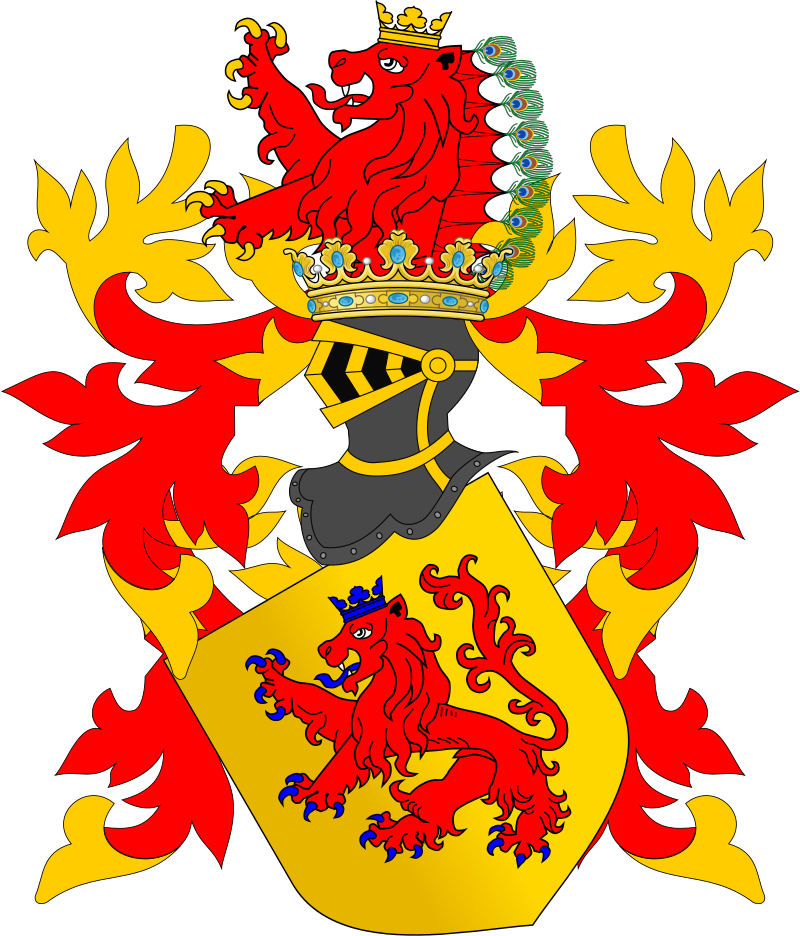
Die Habsburger (auch Haus Habsburg und Haus Österreich[1]) sind ein nach ihrer Stammburg im heutigen Schweizer Kanton Aargau benanntes Fürstengeschlecht, das in Europa seit dem Spätmittelalter neben - und in Konkurrenz zu - den Kapetingern für ein halbes Jahrtausend zur mächtigsten Dynastie aufstieg und auch ein Kolonialreich beherrschte.[2]
Die Eigenbezeichnung „Haus Österreich“ geht auf die neu erworbenen babenbergischen Besitzungen nach Beginn der Neuzeit zurück.
Sie verfügten zunächst über größeren Landbesitz im Oberelsass zwischen Basel und Straßburg.[2] Im Oktober 1273 wurde Rudolf I. als erster Habsburger zum König des Heiligen Römischen Reiches gewählt.[2] Seinen Konkurrenten Ottokar von Böhmen, der bei der Königswahl gegen ihn angetreten war, konnte er fünf Jahre später in der Schlacht auf dem Marchfeld (26. August 1278) östlich von Wien endgültig besiegen.[2] Nach der siegreichen Schlacht, in der Ottokar fiel, stellte Rudolf I. die von Ottokar besetzten Herzogtümer Österreich, Steiermark und Krain unter seine Herrschaft und verwaltete sie zunächst selbst.[2] Indem er Ottokars ursprüngliche Herrschaftsgebiete Böhmen und Mähren bei dessen Sohn Wenzel II. beließ und diesen mit einer seiner Töchter verheiratete, stärkte er die Hausmacht der Habsburger.[2]
1283 vergab Rudolf I. die Herzogtümer Österreich und Steiermark als Lehen an seine Söhne Albrecht I. und Rudolf II. und bewirkte so den Aufstieg seines Hauses vom Grafen- in den Fürstenstand.[2] Im Einvernehmen mit seinem Bruder Rudolf II. verwaltete Albrecht I. Österreich und die Steiermark allein, während Rudolf II. sich auf den alten Familienbesitz im Aargau und im Oberelsass zurückzog.[2]
Nachdem der letzte Meinhardiner Heinrich von Kärnten am 2. Mai 1335 gestorben war, übertrug Kaiser Ludwig der Bayer den Herzögen von Österreich, Albrecht II. und dessen Bruder, Otto dem Fröhlichen, die Herzogtümer Kärnten und Krain als Reichslehen. Im Jahr 1363 gelang es Herzog Rudolf IV. auch Tirol an die Habsburger zu bringen.
Ab 1438 bzw. 1526/1527 kamen Böhmen, Kroatien und Teile Ungarns unter die Herrschaft der Habsburger. Mit der böhmischen Krone fiel 1526 auch die Kurfürstenwürde, das heißt die Stimme des ranghöchsten weltlichen Mitgliedes unter den sieben Kurfürsten, endgültig an die Habsburger. Von 1439 bis 1806 stellte das Haus Habsburg fast ununterbrochen die deutschen Könige und römisch-deutschen Kaiser.
Im 16. Jahrhundert teilte sich die Dynastie in eine spanische Linie, die über Spanien und Portugal und deren überseeische Besitzungen in Amerika, Afrika und Asien herrschte und deren Mannesstamm 1700 mit Karl II. ausstarb, und eine österreichische Linie, deren Mannesstamm 1740 mit Karl VI. endete, aber durch seine Pragmatische Sanktion, die er mit den Nachbarn abzusichern suchte, namentlich von den Nachkommen seiner ältesten Tochter Maria Theresia fortgesetzt wurde (die Regelung galt aber nicht für das Oberhaupt des Heiligen Römischen Reichs, das ein Mann sein musste). Maria Theresia gründete durch ihre Verbindung mit Franz I. Stephan aus dem Hause Lothringen, der als Franz I. die Kaiserwürde im Reich erlangte, das Haus Habsburg-Lothringen. In diesem Haus verblieb die römisch-deutsche Kaiserwürde bis zum Ende des Reiches 1806. Der letzte römisch-deutsche Kaiser, Franz II., begründete 1804 als Franz I. von Österreich das Kaisertum Österreich, das 1867/68 zur Doppelmonarchie Österreich-Ungarn umgewandelt wurde und bis 1918 bestand. Nach 1918 mussten die Habsburger auf ihre Herrschaftsansprüche sowohl in Österreich als auch in Ungarn verzichten.
Zeitweise herrschten die Habsburger auch über andere europäische Gebiete, unter anderem über die habsburgischen Niederlande und die Freigrafschaft Burgund, in Oberitalien über Mailand sowie Teile der Lombardei und über die früher Vorderösterreich genannten Länder in Oberdeutschland. Sekundogenituren (Nebenlinien) regierten ab dem 18. Jahrhundert in der Toskana, in Modena und in Parma sowie kurze Zeit im 19. Jahrhundert in Mexiko.
Familienoberhaupt ist seit 2007 Karl Habsburg-Lothringen als ältester Sohn Otto von Habsburgs, des letzten Kronprinzen Österreich-Ungarns.
哈布斯堡王朝(德语:Habsburg),也称哈普斯堡家族(Hapsburg),是欧洲历史上最为显赫、统治地域最广的王室之一。
其家族成员曾出任罗马人民的国王和神圣罗马帝国皇帝(1273年—1291年,1298年—1308年,1438年—1742年,1745年—1806年),奥地利公爵(1282年—1453年)、大公(1453年—1804年)、奥地利帝国皇帝(1804年—1918年),匈牙利国王(1526年—1918年),波希米亚国王(1526年—1918年),西班牙国王(1516年—1700年),葡萄牙国王(1580年—1640年),墨西哥皇帝[注 1](1864年—1867年)和今法国、意大利、荷兰、比利时境内及南部斯拉夫地区若干王国、公国的国王、大公与公爵。
16世纪中叶查理五世退位后,哈布斯堡家族分为奥地利与西班牙两个分支,前者占据神圣罗马帝国的帝位,称奥地利哈布斯堡皇朝,后者则为西班牙国王,统治西班牙、西属尼德兰、意大利南部的那不勒斯王国、撒丁王国以及美洲新世界的广袤领土,称西班牙哈布斯堡王朝。但由于多代近支联姻,在累代基因缺陷下,继承者纷纷出现身心理的健康问题。西班牙分支在1700年、奥地利分支在1740年相继男嗣断绝。西班牙王位落入法国皇室波旁家族之手;而奥地利分支与洛林家族联姻,帝国皇帝查理六世之女玛丽亚·特蕾西亚嫁于洛林公爵、托斯卡纳大公弗兰茨·斯蒂芬,并依据《国本诏书》继承了奥地利、匈牙利与波希米亚等家族领地,由此创建了哈布斯堡-洛林皇朝,1745年弗兰茨·斯蒂芬当选为帝国皇帝。
ハプスブルク家(ドイツ語: Haus Habsburg)は、現在のスイス領内に発祥したドイツ系(アルザス系)の貴族。
古代ラテン人の有力貴族であるユリウス一門(カエサル家)の末裔を自称し、中世の血縁制度を利用した政略結婚により広大な領土を獲得、南ドイツを代表する大貴族に成長した。中世から20世紀初頭まで中部ヨーロッパで強大な勢力を誇り、オーストリア大公国(オーストリア公国)、スペイン王国、ナポリ王国、トスカーナ大公国、ボヘミア王国、ハンガリー王国、オーストリア帝国(後にオーストリア=ハンガリー帝国)などの大公・国王・皇帝の家系となった。また、後半は形骸化していたとはいえ、ほぼドイツ全域を統べる神聖ローマ帝国(ドイツ帝国)の皇帝位を中世以来保持し、その解体後もオーストリアがドイツ連邦議長を独占したため、ビスマルクによる統一ドイツ帝国から排除されるまで、形式的には全ドイツ人の君主であった。ヨーロッパ随一の名門王家と言われている。
家名の「Habsburg」の発音は、ドイツ語発音: [ˈhaːpsbʊʁk](ハープスブルク)とドイツ語では発音される[1]。ただし日本では慣用表記・読み方であるハプスブルクが多く使われる。スペイン語ではアブスブルゴ家(Casa de Habsburgo)、フランス語ではアブズブール家(Maison de Habsbourg)となる。ルドルフ1世以来オーストリアを本拠としたことから、スペイン系を含めて「オーストリア家」(ドイツ語:Haus Österreich, スペイン語:Casa de Austria, フランス語:Maison d'Autriche)とも呼ばれる。例としてスペイン生まれのルイ13世王妃はフランスでアンヌ・ドートリッシュ(オーストリアのアンヌ)と称された。
The House of Habsburg (/ˈhæpsbɜːrɡ/; German: [ˈhaːpsbʊɐ̯k]; traditionally spelled Hapsburg in English), also called the House of Austria,[1] was one of the most influential and distinguished royal houses of Europe. The throne of the Holy Roman Empire was continuously occupied by the Habsburgs from 1438 until their extinction in the male line in 1740. The house also produced emperors and kings of the Kingdom of Bohemia, Kingdom of England (Jure uxoris King), Kingdom of Germany, Kingdom of Hungary, Kingdom of Croatia, Kingdom of Illyria, Second Mexican Empire, Kingdom of Ireland (Jure uxoris King), Kingdom of Portugal, and Kingdom of Spain, as well as rulers of several Dutch and Italian principalities.[dubious ] From the 16th century, following the reign of Charles V, the dynasty was split between its Austrian and Spanish branches. Although they ruled distinct territories, they nevertheless maintained close relations and frequently intermarried.
The House takes its name from Habsburg Castle, a fortress built in the 1020s in present-day Switzerland, in the canton of Aargau, by Count Radbot of Klettgau, who chose to name his fortress Habsburg. His grandson Otto II was the first to take the fortress name as his own, adding "Count of Habsburg" to his title. The House of Habsburg gathered dynastic momentum through the 11th, 12th, and 13th centuries.
By 1276, Count Radbot's seventh generation descendant Rudolph of Habsburg moved the family's power base from Habsburg Castle to the Duchy of Austria. Rudolph became King of Germany in 1273, and the dynasty of the House of Habsburg was truly entrenched in 1276 when Rudolph became ruler of Austria, which the Habsburgs and their descendants ruled until 1918.
A series of dynastic marriages[2] enabled the family to vastly expand its domains to include Burgundy, Spain and its colonial empire, Bohemia, Hungary, and other territories. In the 16th century, the family separated into the senior Habsburg Spain and the junior Habsburg Monarchy branches, who settled their mutual claims in the Oñate treaty.
The House of Habsburg became extinct in the 18th century. The senior Spanish branch ended upon the death of Charles II of Spain in 1700 and was replaced by the House of Bourbon. The remaining Austrian branch became extinct in the male line in 1740 with the death of Holy Roman Emperor Charles VI, and completely in 1780 with the death of his eldest daughter Maria Theresa of Austria. It was succeeded by the Vaudémont branch of the House of Lorraine, descendants of Maria Theresa's marriage to Francis III, Duke of Lorraine. The new successor house styled itself formally as the House of Habsburg-Lorraine (German: Habsburg-Lothringen), and because it was often confusingly still referred to as the House of Habsburg, historians use the unofficial appellation of the Habsburg Monarchy for the countries and provinces that were ruled by the junior Austrian branch of the House of Habsburg between 1521 and 1780 and then by the successor branch of Habsburg-Lorraine until 1918. The Lorraine branch continues to exist to this day and its members use the Habsburg name (example: Otto von Habsburg).
The Habsburg Empire had the advantage of size, but multiple disadvantages. There were rivals on four sides, its finances were unstable, the population was fragmented into multiple ethnicities, and its industrial base was thin. Its naval resources were so minimal that it did not attempt to build an overseas empire. It did have the advantage of good diplomats, typified by Metternich (1773–1859); they had a grand strategy for survival that kept the empire going despite wars with the Ottomans, Frederick the Great, Napoleon and Bismarck, until the final disaster of the First World War.[3] Along with the Capetian dynasty, it was one of the two most powerful continental European royal families, dominating European politics for nearly five centuries.
La maison de Habsbourg /ˈabzbur/ ou maison d'Autriche est une importante Maison souveraine d'Europe connue entre autres pour avoir fourni tous les empereurs du Saint-Empire romain germanique entre 1452 et 1740, ainsi qu'une importante lignée de souverains d'Espagne et de l'empire d'Autriche, puis de la double monarchie austro-hongroise. La dynastie porte le nom de « Maison de Habsbourg-Lorraine » depuis 1780.
La Casa d'Asburgo (o Absburgo, italianizzazione dal tedesco Habsburg, Hapsburg o Casa d'Austria[3]) è una delle più importanti ed antiche famiglie reali e imperiali d'Europa. I suoi membri sono stati per molti secoli imperatori del Sacro Romano Impero, hanno governato in Austria come duchi, arciduchi e imperatori; sono stati re di Spagna e re del Portogallo.
Il nome "Asburgo"[4] deriva dall'Habichtsburg (contratto in Habsburg), castello situato nell'omonimo comune del cantone svizzero di Argovia, sulle sponde del fiume Aare. La "Rocca dell'Astore", questo il significato in tedesco, è stata la sede originaria e feudo comitale degli Asburgo. Erano infatti cortigiani dell'imperatore Federico I Hohenstaufen detto "Barbarossa", che seguivano nei cortei reggendo l'astore, da cui il nome.
Dal sud-ovest della Germania, la famiglia estese la sua influenza ed i suoi possedimenti nei territori del Sacro Romano Impero verso est, nell'odierna Austria (1278-1382). In poche generazioni, la famiglia riuscì ad impossessarsi del trono imperiale, che tenne in distinti periodi (1273-1291 e 1298-1308, 1438-1740 e 1745-1806). Nel XIV secolo la linea ereditaria si divise nel ramo albertino (Alberto della Treccia) e in quello leopoldino (Leopoldo il Prode), estinto nel 1457.
Massimiliano I acquisì i Paesi Bassi in seguito al suo matrimonio con Maria (1477), erede dei duchi di Borgogna, mentre il figlio Filippo il Bello acquisì la Spagna in seguito al matrimonio con Giovanna la Pazza, figlia di Ferdinando II d'Aragona e di Isabella di Castiglia. Il loro figlio, Carlo V, ereditò da loro un impero dove "il sole non tramonta mai". Dopo la sua abdicazione nel 1556, la famiglia si divise nei due rami degli Asburgo di Spagna, estinto nel 1700 con Carlo II di Spagna, e degli Asburgo d'Austria.
L'Ungheria, formalmente sotto il regno degli Asburgo dal 1526, in seguito al matrimonio di Ferdinando I, fratello minore di Carlo V, con Anna Iagellona ma in realtà occupata dall'Impero Ottomano, fu riconquistata nel 1683-1699, e gli Asburgo ne mantennero il possesso fino al 1918.
In seguito alla dissoluzione del Sacro Romano Impero, e per contrastare l'egemonia di Napoleone, Francesco II proclamò nel 1804 l'Impero d'Austria, evitando così la perdita dello status di imperatore. Due anni dopo, il 6 agosto 1806, dichiarò infine sciolto il Sacro Romano Impero, rinunciando alla corona. Francesco fu l'unico Imperatore "doppio" della storia del mondo, essendo: Francesco II, imperatore dei Romani e Francesco I, imperatore d'Austria.
Nel 1867, con il cosiddetto Ausgleich ("compromesso") tra la nobiltà ungherese e la monarchia asburgica, nasce l'Impero austro-ungarico che perdurò fino al 1919.
La linea diretta degli Asburgo formalmente si estinse nel 1780 con la morte di Maria Teresa d'Austria, ultimo membro regnante (nonché unica donna) dei domini ereditari austriaci. La casata, però, continuò con i suoi discendenti, nati dalle sue nozze con Francesco I di Lorena: gli Asburgo-Lorena furono considerati un ramo cadetto degli Asburgo e i membri della nuova casata continuarono a far capo alla casa d'Austria.
Il motto della dinastia è A.E.I.O.U. e viene in genere interpretato in Austriae est imperare orbi universo ("spetta all'Austria regnare sul mondo").
La Casa de Habsburgo (Casa de Austria)1 fue una de las más influyentes y poderosas casas reales de Europa. Los Habsburgo ocuparon el trono del Sacro Imperio Romano Germánico de forma continuada entre 1438 y 1740. También ocuparon en distintos momentos los tronos de los reinos de España, Portugal, Bohemia, Inglaterra, Hungría y Croacia y el Segundo Imperio Mexicano.
Los Habsburgo eran originarios de un modesto castillo en Argovia, actual Suiza. El fundador de la dinastía, el conde Radbot de Habsburgo pasó a controlar el castillo como vasallo del duque de Suabia a principios siglo XI. Por medio de una ambiciosa política matrimonial y de alianzas, los Habsburgo comenzaron a extender su influencia hasta que en el siglo XIII Rodolfo I de Habsburgo, por entonces controlando partes de Alsacia y Argovia, logró ser nombrado Rey de romanos en 1273 durante el interregno subsiguiente a la muerte de Federico II de Hohenstaufen. El conflicto entre Rodolfo I y el heredero de los Hohenstaufen, el rey Ottokar II de Bohemia, resultó en que los Habsburgo adquirieran los territorios de Austria, Estiria, Carniola y Carintia, que formarían parte de los territorios centrales de la familia durante el resto de su historia. En 1452 el influyente duque de Austria Federico III fue elegido emperador del Sacro Imperio Romano Germánico, y desde ese momento hasta su disolución los Habsburgo controlaron el trono del Sacro Imperio.
A partir del reinado del emperador Carlos V (1519-1556), la Casa de Habsburgo se dividió en dos ramas. La rama principal de los Austrias españoles, que gobernó el Imperio español, se extinguió en 1700 a la muerte de Carlos II de España sin descendencia. La rama cadete de los Habsburgo austríacos, que gobernó el Sacro Imperio Romano y los territorios de Austria-Hungría, se extinguió en 1780 a la muerte de la emperatriz María Teresa I de Austria.
Los descendientes de la emperatriz María Teresa, pertenecientes a la rama Vaudemont de la Casa de Lorena, continuaron gobernando Austria y el Imperio Austro-Húngaro hasta 1918 bajo el nombre formal de Casa de Habsburgo-Lorena (Habsburg-Lothringen). Por ello, pese a que dinásticamente los Habsburgo-Lorena no pertenecen a la casa de Habsburgo, es habitual referirse a ellos como miembros de la casa de Habsburgo. En tiempos actuales, el cabeza de la casa de Habsburgo-Lorena fue el príncipe Otón de Habsburgo (1912-2011), y en la actualidad el jefe de dicha casa es el archiduque y príncipe Carlos de Habsburgo Lorena (desde 2007).
 Breakthrough Prize
Breakthrough Prize
 Fundamental Physics Breakthrough Prize
Fundamental Physics Breakthrough Prize
 Breakthrough Prize
Breakthrough Prize
 New Horizons in Physics Prize
New Horizons in Physics Prize
 United States history
United States history
 Ivy League
Ivy League

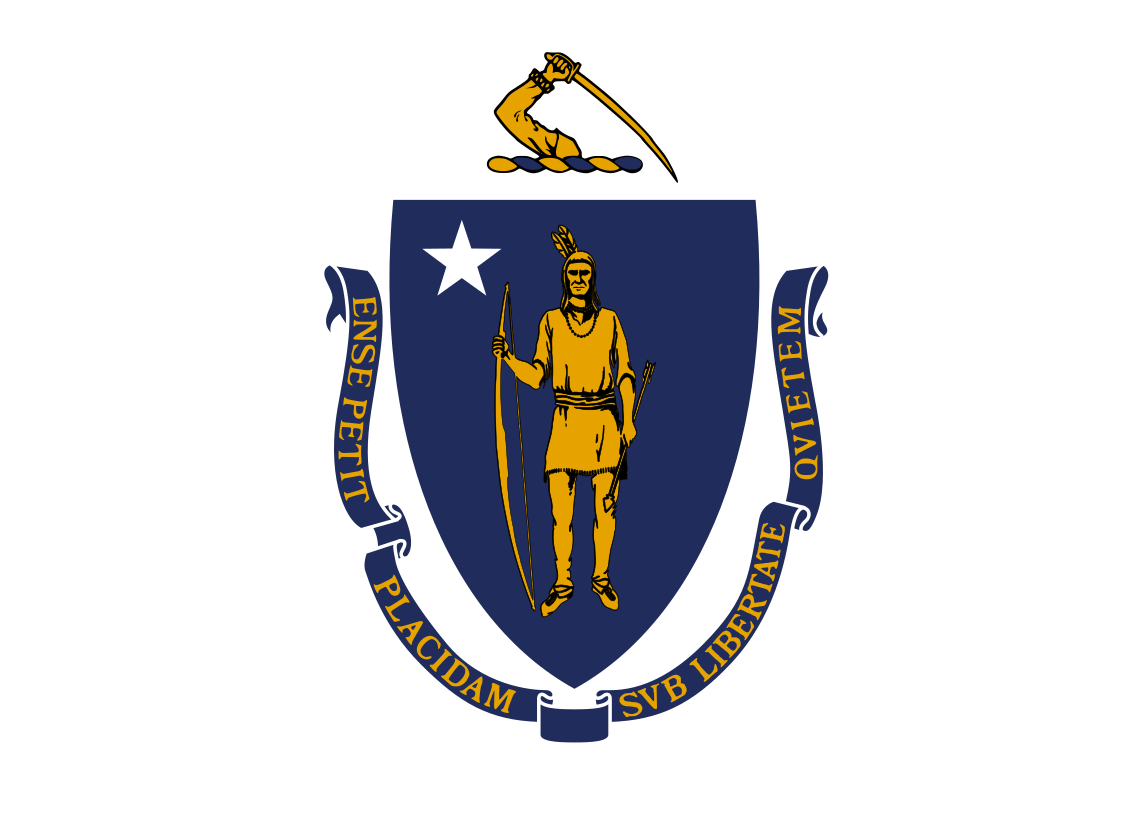 Massachusetts-MA
Massachusetts-MA

 Medical, Pharmaceutical, Rehabilitation
Medical, Pharmaceutical, Rehabilitation
 Medical colleges/Research Institute
Medical colleges/Research Institute
 Nobel prize
Nobel prize
 University/Institute
University/Institute
 Nobel prize
Nobel prize
 Nobel Prize in Chemistry
Nobel Prize in Chemistry
 Nobel prize
Nobel prize
 Nobel Prize in Literature
Nobel Prize in Literature
 Nobel prize
Nobel prize
 Nobel Prize in Physics
Nobel Prize in Physics
 Nobel prize
Nobel prize
 Nobel Prize in Physiology or Medicine
Nobel Prize in Physiology or Medicine
 Nobel prize
Nobel prize
 Nobel Memorial Prize in Economic Sciences
Nobel Memorial Prize in Economic Sciences
 Nobel prize
Nobel prize
 Nobel Peace Prize
Nobel Peace Prize
 Sinology
Sinology

 Universities in the USA
Universities in the USA
 United States
United States

 Science and technology
Science and technology
 *World famous research institutions
*World famous research institutions
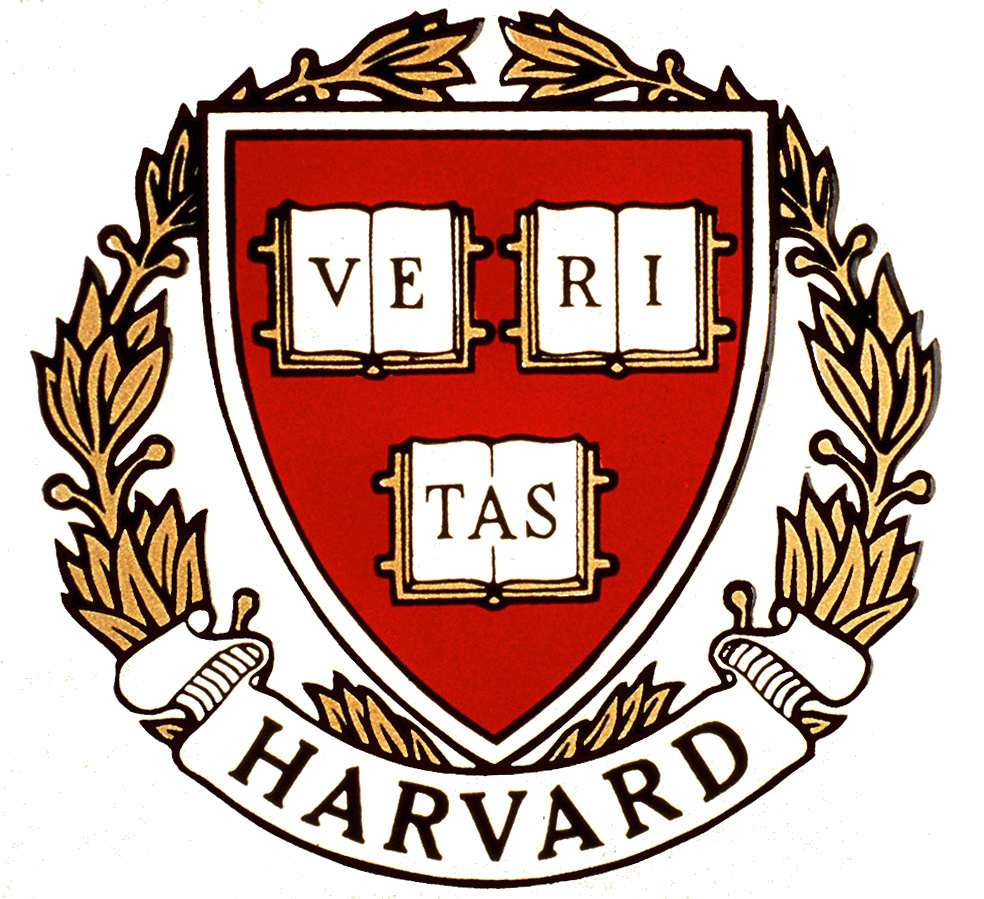
Die Harvard University (kurz Harvard) ist eine private Universität in Cambridge (Massachusetts) im Großraum Boston an der Ostküste der Vereinigten Staaten. Die Gründung geht auf das Jahr 1636 zurück, als fromme englische Kolonisten im damaligen Newetowne den Beschluss fassten, eine Ausbildungsstätte für Geistliche zu errichten. Aus dieser Schule ging die Harvard-Universität hervor, die damit die älteste Universität der Vereinigten Staaten ist.
Obwohl die Universität überkonfessionell ausgerichtet ist, bestanden besonders zu Beginn enge Beziehungen zu den Kongregationalisten und Unitariern.[3] Harvard erreicht in internationalen Vergleichen regelmäßig einen Spitzenplatz unter den besten Eliteuniversitäten und ist Gründungsmitglied der Association of American Universities. Seit einigen Jahren errichtet die Universität ein globales Netzwerk für Alumni, Gäste und Freunde.[4]
哈佛大学(英语:Harvard University)为一所本部坐落于马萨诸塞州剑桥市的私立研究型大学。其因历史、学术影响力、财富等因素而获评为世上最享负盛名的学府之一。[5][6][7][8][9]
哈佛于1636年由当地的殖民地立法机关立案成立,迄今为全美历史最悠久的高等学府,并拥有北美最古老的校董委员会。[10] 其最初称之为“新学院”,该机构为了感谢一名年轻的牧师约翰·哈佛所作出的捐赠,而改名为“哈佛学院”。虽然从没有与任何宗教派别有正式的联系,但早期的学院还是以培养公理会及一位论派神职者为主要职责。可是自18世纪起,其课程与学生群体的宗教性质渐渐淡化,而19世纪的哈佛则进一步成为了波士顿精英的文化起源地[11][12]。美国南北战争后,当时的校长查尔斯·艾略特将哈佛各个学术机构综合成了一所研究型大学,并增添了小班授课以及入学考试,而这些模式同时也影响了国家的中高等教育政策。此校亦为美国大学协会其中一个原始成员[13],并在经济大萧条及二次大战后进一步修改了课程及收生政策。后与拉德克利夫学院合并成为了男女校。[13]
校方目前共有十所学院及一所高等研究院。这些单位偏布邻近各区:其本部位于剑桥的哈佛庭院;医学、公共卫生及口腔医学院位于波士顿的长木医学区;而包括哈佛体育场在内的大学体育设施以及商学院则在奥尔斯顿。哈佛同时拥有庞大的资产,每年所收到的捐款回赠数目长期位列全球教育机构之首。[14][15][16][1]
哈佛大学为全美最难入读的学府之一。[17] 学校的研究生课程较为多元化,而本科教育则主要集中在文理学范畴。校方在2007年起实行了财政援助政策,家庭年收入低于一定数目的学生获得不同程度的学费豁免。[18] 哈佛拥有全美最古老的图书馆系统,这同时也是全球最具规模的私立及大学图书馆系统,馆藏量逾1600万册。[19] 其为常春藤盟校成员之一,现共有42支参与不同运动竞赛的代表队,属全美大学体育协会甲组。除了体育,学生的课外生活还包括各个学会所举办的活动。哈佛校友涵盖8名美国总统及多国领袖与政治要员;其亦培养了62名富豪企业家及335位罗德学者,人数均为全美最多[20][21];另也有150多名诺贝尔奖得主现在或曾经在哈佛学习或工作[注 1]。
ハーバード大学(英語: Harvard University)は、アメリカ合衆国の研究型私立大学であり、アイビー・リーグの一校。イギリス植民地時代の1636年に設置された、アメリカ合衆国内において、最も学術的起源の古い高等教育機関である。
Harvard University is a private Ivy League research university in Cambridge, Massachusetts, with about 6,700 undergraduate students and about 15,250 post graduate students. Established in 1636 and named for its first benefactor, clergyman John Harvard, Harvard is the United States' oldest institution of higher learning,[9] and its history, influence, and wealth have made it one of the world's most prestigious universities.[10] The Harvard Corporation is its first chartered corporation. Although never formally affiliated with any denomination, the early College primarily trained Congregational and Unitarian clergy. Its curriculum and student body were gradually secularized during the 18th century, and by the 19th century, Harvard had emerged as the central cultural establishment among Boston elites.[11][12] Following the American Civil War, President Charles W. Eliot's long tenure (1869–1909) transformed the college and affiliated professional schools into a modern research university; Harvard was a founding member of the Association of American Universities in 1900.[13] A. Lawrence Lowell, who followed Eliot, further reformed the undergraduate curriculum and undertook aggressive expansion of Harvard's land holdings and physical plant. James Bryant Conant led the university through the Great Depression and World War II and began to reform the curriculum and liberalize admissions after the war. The undergraduate college became coeducational after its 1977 merger with Radcliffe College.
The university is organized into eleven separate academic units—ten faculties and the Radcliffe Institute for Advanced Study—with campuses throughout the Boston metropolitan area:[14] its 209-acre (85 ha) main campus is centered on Harvard Yard in Cambridge, approximately 3 miles (5 km) northwest of Boston; the business school and athletics facilities, including Harvard Stadium, are located across the Charles River in the Allston neighborhood of Boston and the medical, dental, and public health schools are in the Longwood Medical Area.[15] The endowment of Harvard's is worth $37.1 billion, making it the largest of any academic institution.[8]
Harvard is a large, highly residential research university.[16] The nominal cost of attendance is high, but the university's large endowment allows it to offer generous financial aid packages.[17] The Harvard Library is the world's largest academic and private library system, comprising 79 individual libraries holding over 18 million items.[18][19][20] The University is cited as one of the world's top tertiary institutions by various organizations.[21][22][23][24]
Harvard's alumni include eight U.S. presidents, several foreign heads of state, 62 living billionaires, 359 Rhodes Scholars, and 242 Marshall Scholars.[25][26][27] To date, some 157 Nobel laureates, 18 Fields Medalists, and 14 Turing Award winners have been affiliated as students, faculty, or staff.[28] In addition, Harvard students and alumni have won 10 Academy Awards, 48 Pulitzer Prizes,[29] and 108 Olympic medals (46 gold, 41 silver and 21 bronze).[30]
L’université Harvard (Harvard University), ou plus simplement Harvard, est une université privée américaine située à Cambridge, ville de l'agglomération de Boston, dans le Massachusetts. Fondée le 28 octobre 16361, c'est le plus ancien établissement d'enseignement supérieur des États-Unis2,3.
Elle fait partie de l'Ivy League, regroupement informel des huit universités de la côte Est des États-Unis. Plus de 70 de ses étudiants ont reçu un prix Nobel4. Le corps enseignant est constitué de 2 497 professeurs, pour 6 715 étudiants de premier cycle (undergraduate, en anglais) et 12 424 étudiants de cycle supérieur (graduate en anglais). Harvard attire des étudiants du monde entier (132 nationalités représentées en 20045).
L'Università Harvard (in inglese: Harvard University) è un'università privata statunitense situata a Cambridge, nel Massachusetts, nell'area metropolitana della città di Boston.
Fu fondata con contributi privati a partire da quelli elargiti nel 1639[1] da John Harvard ed è parte della Ivy League. Harvard è la più antica istituzione universitaria degli Stati Uniti[2] e la prima corporazione (ufficialmente The President and Fellows of Harvard College) registrata nella nazione. La storia, l'influenza e la ricchezza di Harvard l'hanno resa una delle più prestigiose università nel mondo.[3][4][5][6]
Harvard ha ricevuto il proprio nome dal suo primo benefattore, John Harvard. Sebbene mai ufficialmente affiliata con una chiesa, l'università originariamente forniva istruzione al clero congregazionista e unitariano. Il curriculum accademico e gli studenti di Harvard si laicizzarono gradualmente durante il diciottesimo secolo, e all'inizio del diciannovesimo l'istituzione era ormai emersa come il principale centro culturale tra le élite sociali di Boston.[7][8] Dopo la Guerra Civile Americana, i quarant'anni di presidenza di Charles W. Eliot trasformarono Harvard College e le scuole professionali affiliate in un'università di ricerca centralizzata, guidata da James Bryan Conant negli anni della Grande Depressione e della seconda guerra mondiale. Harvard ha le più alte sovvenzioni finanziarie di qualunque istituzione accademica nel mondo; a settembre 2011 esse ammontavano a 32 miliardi di dollari statunitensi.[9] L'attuale rettore dell'Università Harvard è la professoressa Drew Gilpin Faust.
Al 2010 Harvard contava circa 2100 insegnanti, 6700 studenti di primo livello e 14500 studenti specialistici e professionali.[10] Otto presidenti degli Stati Uniti si sono laureati a Harvard e 75 premi Nobel sono stati studenti, insegnanti o affiliati. Harvard è anche la scuola di provenienza di sessantadue miliardari viventi.[11] Con oltre 17 milioni di volumi[12] il sistema di biblioteche accademiche di Harvard è il più grande degli Stati Uniti e uno dei più grandi del mondo.
La Universidad de Harvard o Universidad Harvard es una universidad privada ubicada en la ciudad de Cambridge (Massachusetts) en Estados Unidos. Fue fundada en 1636 y nombrada así por el clérigo John Harvard, su primer benefactor. Es la institución de educación superior más antigua de los Estados Unidos. Su historia, influencia y riqueza la han convertido en una de las universidades más prestigiosas del mundo
El primer claustro estuvo formado por congregacionales y unitarios de la primera escuela de la universidad. Su currículum y su cuerpo estudiantil fueron gradualmente secularizados durante el siglo XVIII, y para el siglo XIX, Harvard había emergido como el establecimiento cultural central entre las élites de Boston. Después de la Guerra Civil Estadounidense, la larga permanencia del presidente Charles W. Eliot (1869-1909) transformó la universidad y las escuelas profesionales afiliadas en una moderna universidad de investigación; Harvard fue miembro fundador de la Association of American Universities en 1900. A. Lawrence Lowell, quien siguió a Eliot, reformó aún más el plan de estudios de pregrado y emprendió una expansión agresiva de las propiedades de tierra y la planta física de Harvard. James Bryant Conant condujo a la universidad a través de la Gran Depresión y la Segunda Guerra Mundial y comenzó a reformar el plan de estudios y liberalizar las admisiones después de la guerra. La universidad de pregrado se convirtió en mixta después de su fusión en 1977 con Radcliffe College.
La universidad está organizada en once unidades académicas separadas —tres facultades y el Instituto Radcliffe para Estudios Avanzados— con campus en todo el área metropolitana de Boston: su campus principal de 209 acres (85 ha) se centra en el Harvard Yard en Cambridge, aproximadamente. 3 millas (5 km) al noroeste de Boston; la escuela de negocios y las instalaciones de atletismo, incluido el Harvard Stadium, están ubicadas al otro lado del río Charles en el vecindario Allston de Boston y las escuelas de medicina, odontología y salud pública se encuentran en el área médica de Longwood. La dotación de Harvard es de $ 34.5 mil millones, por lo que es la más grande de cualquier institución académica.
Harvard es una universidad de investigación grande y altamente residencial. El costo nominal de asistencia es alto, pero la gran dotación de la universidad le permite ofrecer generosos paquetes de ayuda financiera. Opera varios museos de arte, cultura y ciencias, junto con la Biblioteca de Harvard, que es el sistema de bibliotecas privadas y académicas más grande del mundo, que comprende 79 bibliotecas individuales con más de 18 millones de volúmenes. Entre los ex alumnos de Harvard se incluyen ocho presidentes de los Estados Unidos, varios jefes de estado extranjeros, 62 billonarios vivos, 359 Rhodes Scholars y 242 Marshall Scholars. Hasta la fecha, unos 157 premios Nobel, 18 ganadores de la medalla Fields y 14 ganadores del premio Turing han sido afiliados como estudiantes, profesores o personal. Además, los estudiantes y ex alumnos de Harvard han ganado 10 premios de la Academia, 48 premios Pulitzer, y 108 medallas olímpicas (46 de oro, 41 de plata y 21 de bronce).
Entre los rankings mundiales, el Academic Ranking of World Universities (ARWU) ha situado a Harvard como la mejor universidad del mundo todos los años desde su lanzamiento. Cuando QS y Times Higher Education se publicaron en sociedad como THE-QS World University Rankings durante 2004-2009, Harvard también ocupó el primer puesto todos los años. Además, los THE World Reputation Rankings clasificaron consecutivamente a Harvard como la institución más importante entre las "seis súper marcas" universitarias del mundo; las otras fueron Berkeley, Cambridge, MIT, Oxford y Stanford.


 Review
Review
 Literature
Literature
 Economy and trade
Economy and trade
 Education and Research
Education and Research

 IT-Times
IT-Times
 Architecture
Architecture
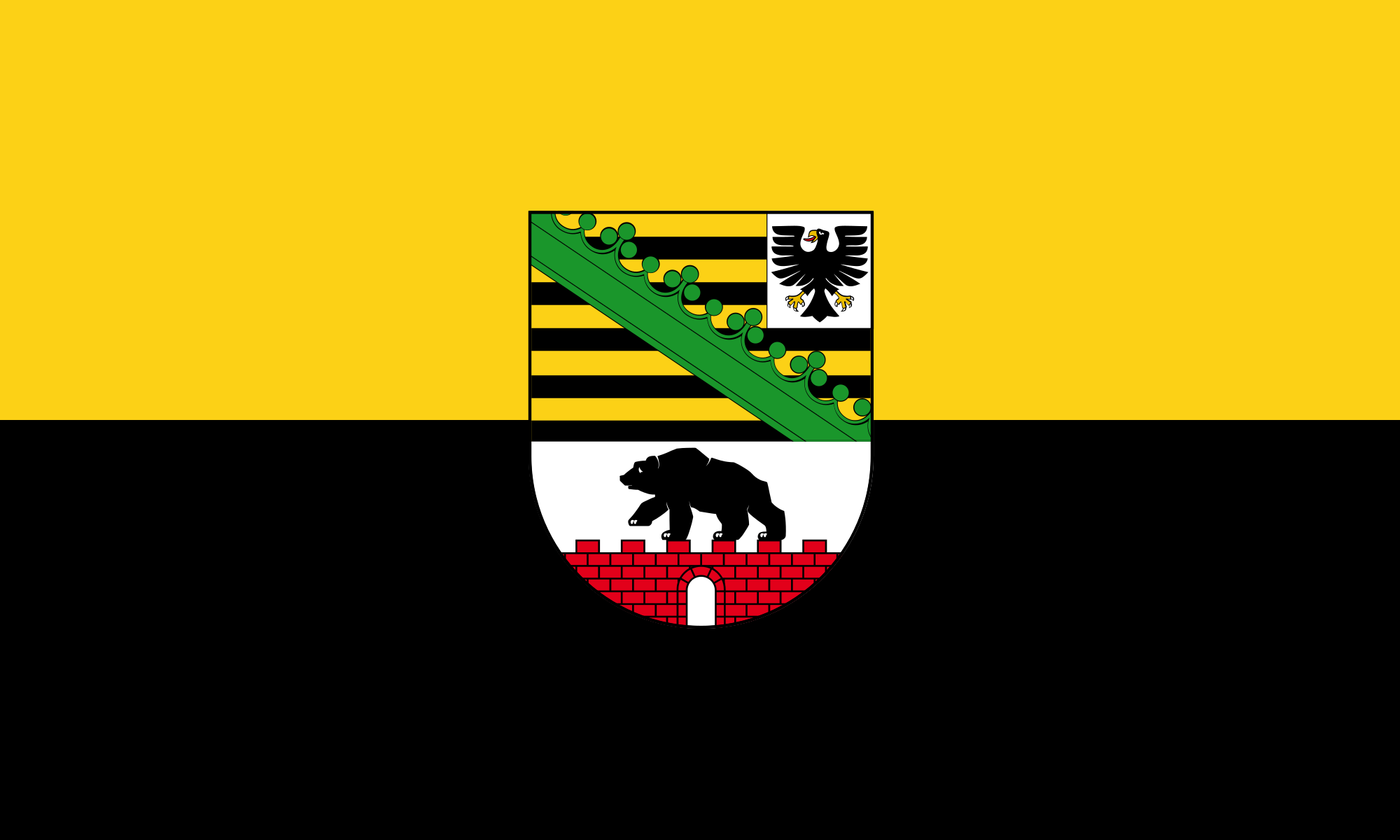 Saxony-Anhalt
Saxony-Anhalt
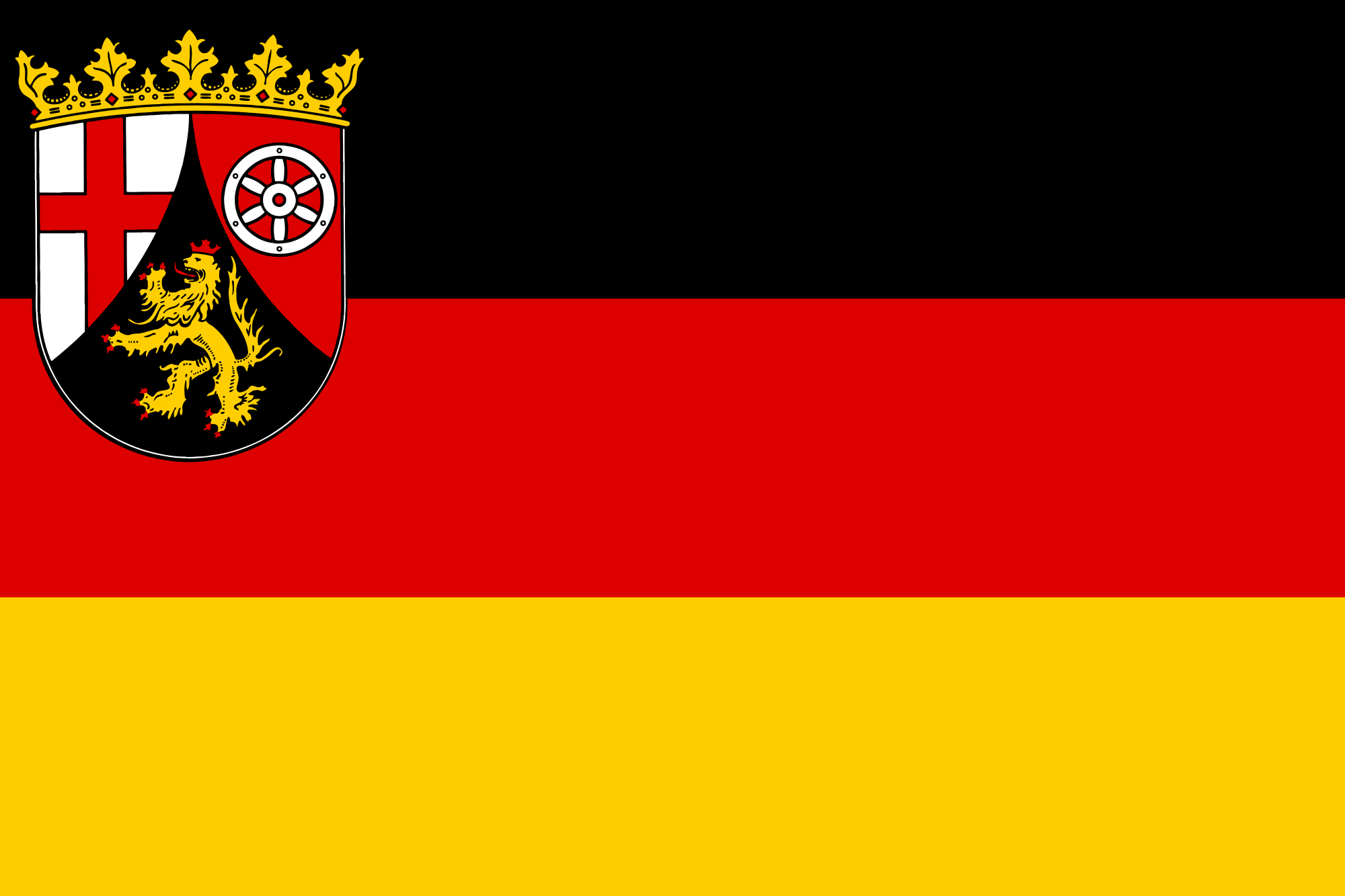 Rhineland-Palatinate
Rhineland-Palatinate